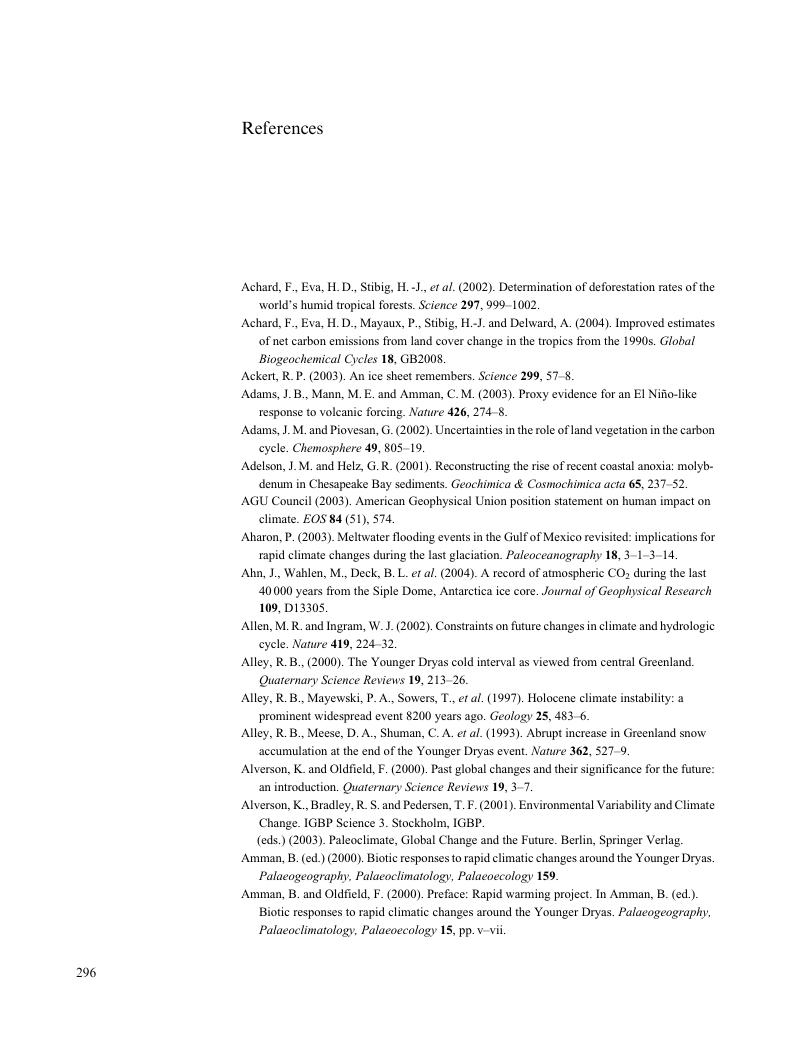Book contents
- Frontmatter
- Contents
- Preface
- Acknowledgements
- List of Permissions
- 1 Defining and exploring the key questions
- 2 An introduction to models and modelling
- 3 The palaeo-record: approaches, timeframes and chronology
- 4 The Palaeo-record: archives, proxies and calibration
- 5 Glacial and interglacial worlds
- 6 The transition from the last glacial maximum to the Holocene
- 7 The Holocene
- 8 The Anthropocene – a changing atmosphere
- 9 The Anthropocene – changing land
- 10 The Anthropocene: changing aquatic environments and ecosystems
- 11 Changing biodiversity
- 12 Detection and attribution
- 13 Future global mean temperatures and sea-level
- 14 From the global to the specific
- 15 Impacts and vulnerability
- 16 Sceptics, responses and partial answers
- References
- Index
- References
References
Published online by Cambridge University Press: 05 June 2012
- Frontmatter
- Contents
- Preface
- Acknowledgements
- List of Permissions
- 1 Defining and exploring the key questions
- 2 An introduction to models and modelling
- 3 The palaeo-record: approaches, timeframes and chronology
- 4 The Palaeo-record: archives, proxies and calibration
- 5 Glacial and interglacial worlds
- 6 The transition from the last glacial maximum to the Holocene
- 7 The Holocene
- 8 The Anthropocene – a changing atmosphere
- 9 The Anthropocene – changing land
- 10 The Anthropocene: changing aquatic environments and ecosystems
- 11 Changing biodiversity
- 12 Detection and attribution
- 13 Future global mean temperatures and sea-level
- 14 From the global to the specific
- 15 Impacts and vulnerability
- 16 Sceptics, responses and partial answers
- References
- Index
- References
Summary

- Type
- Chapter
- Information
- Environmental ChangeKey Issues and Alternative Perspectives, pp. 296 - 345Publisher: Cambridge University PressPrint publication year: 2005



